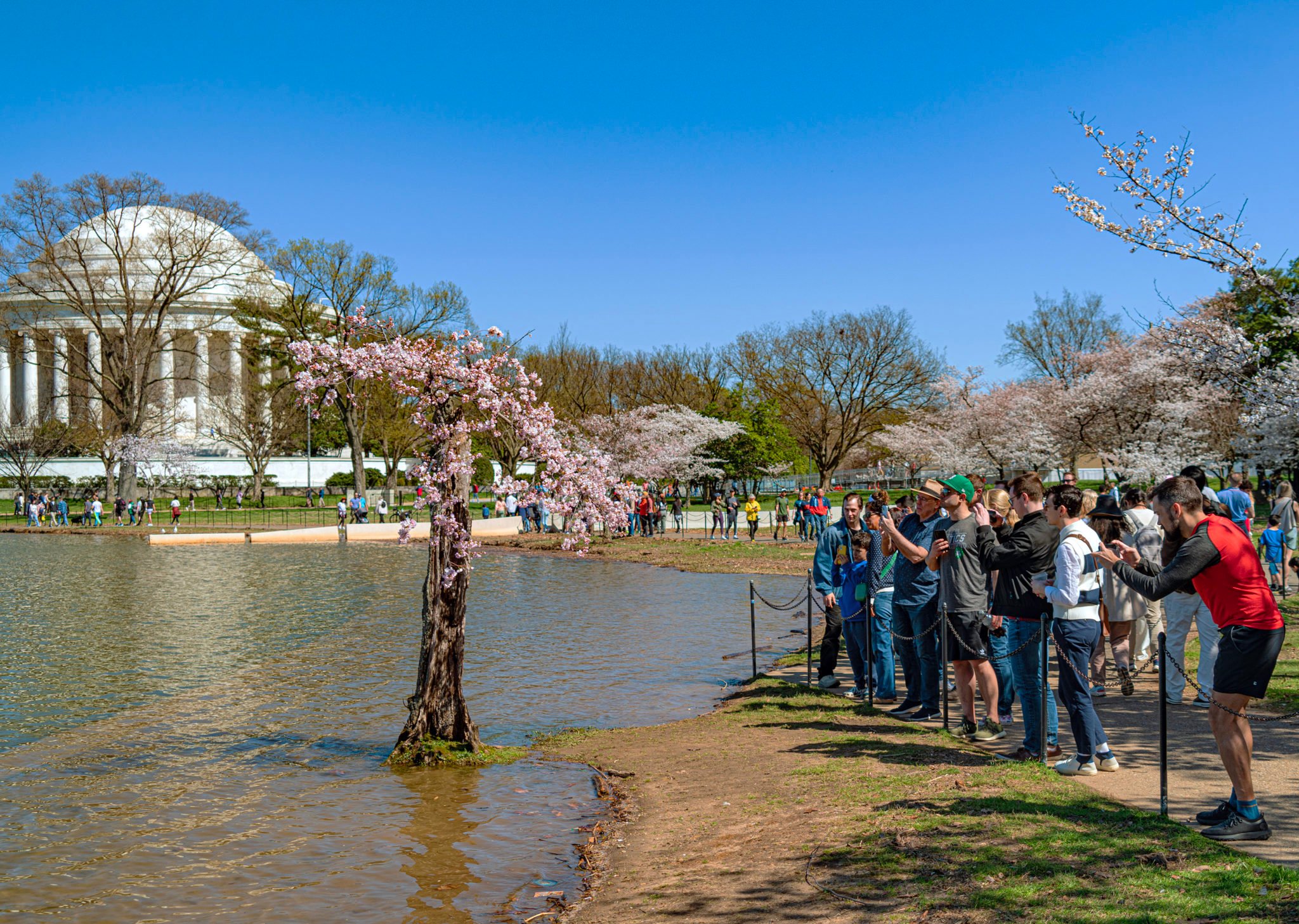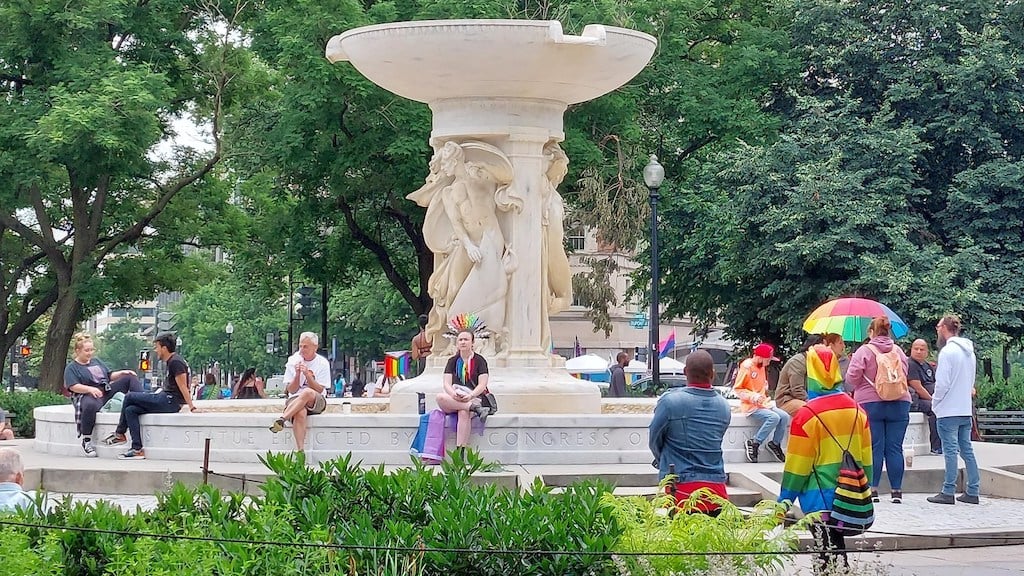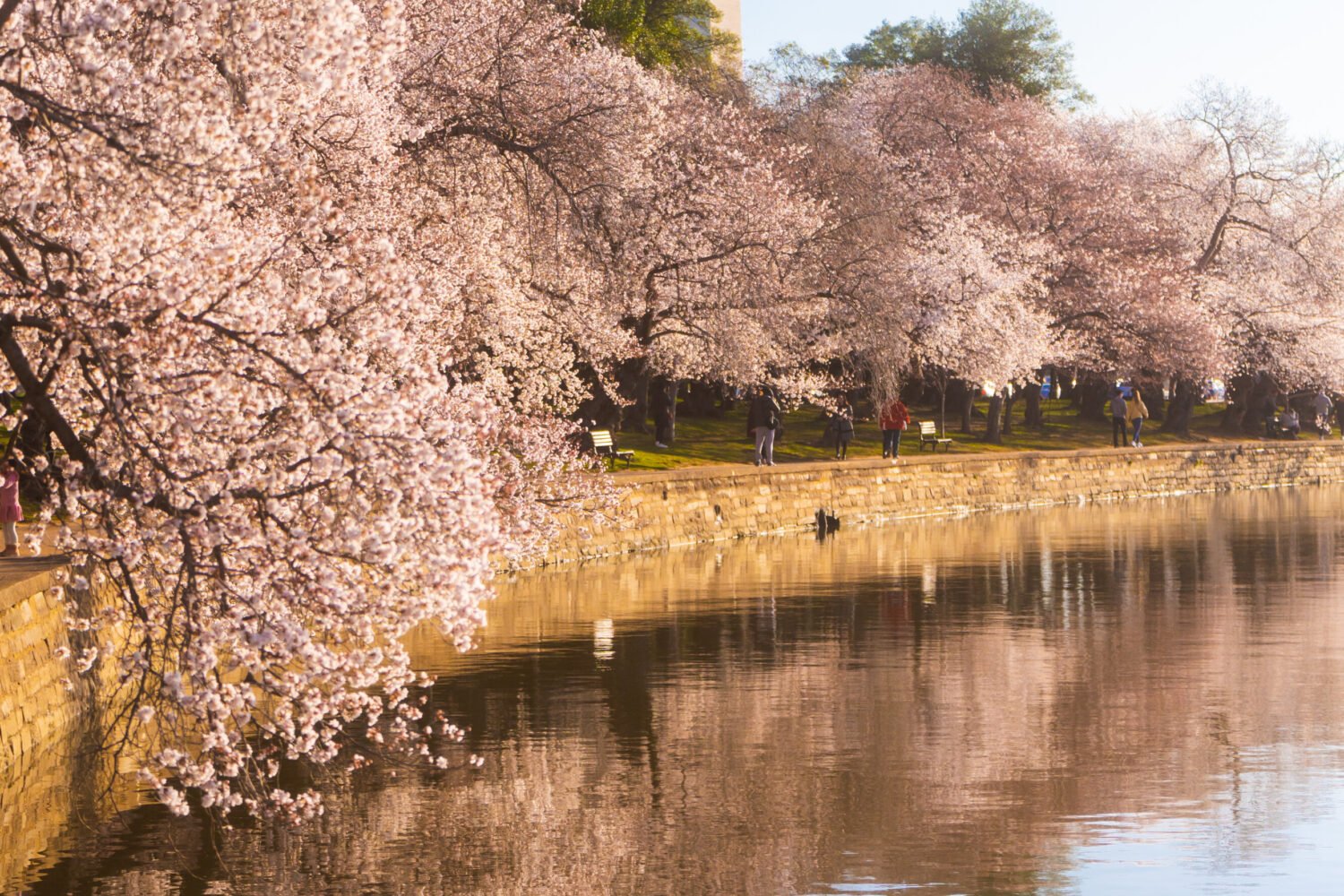Stroll the blossom-lined Tidal Basin right now, and about a minute west of the Jefferson Memorial, you’ll approach an almost paparazzi-like scene: fans clamoring to view what’s been called a “hero,” “an icon,” and a “living legend.” The celebrity in question? Stumpy, the little cherry tree that could.
After years of undergoing daily flooding from the basin’s brackish waters at high tide, the literal stump of a tree doesn’t have much to work with. It’s basically a stout, hollowed-out trunk with a determined branch of blooms, but, boy, has it captured our imaginations.
Stumpy’s the muse of an upcoming needle felting workshop. He’s the mascot of this year’s Credit Union Cherry Blossom Ten Mile Run and 5K. His likeness has inspired watercolor paintings, t-shirts, hats, Lego creations, and calendars. Admirers have left roses and a bottle of whisky at his base. He even made national news and the front page of the Washington Post’s Metro section. (And he’s become so anthropomorphized that it feels more natural to call Stumpy a “he” than an “it”.)
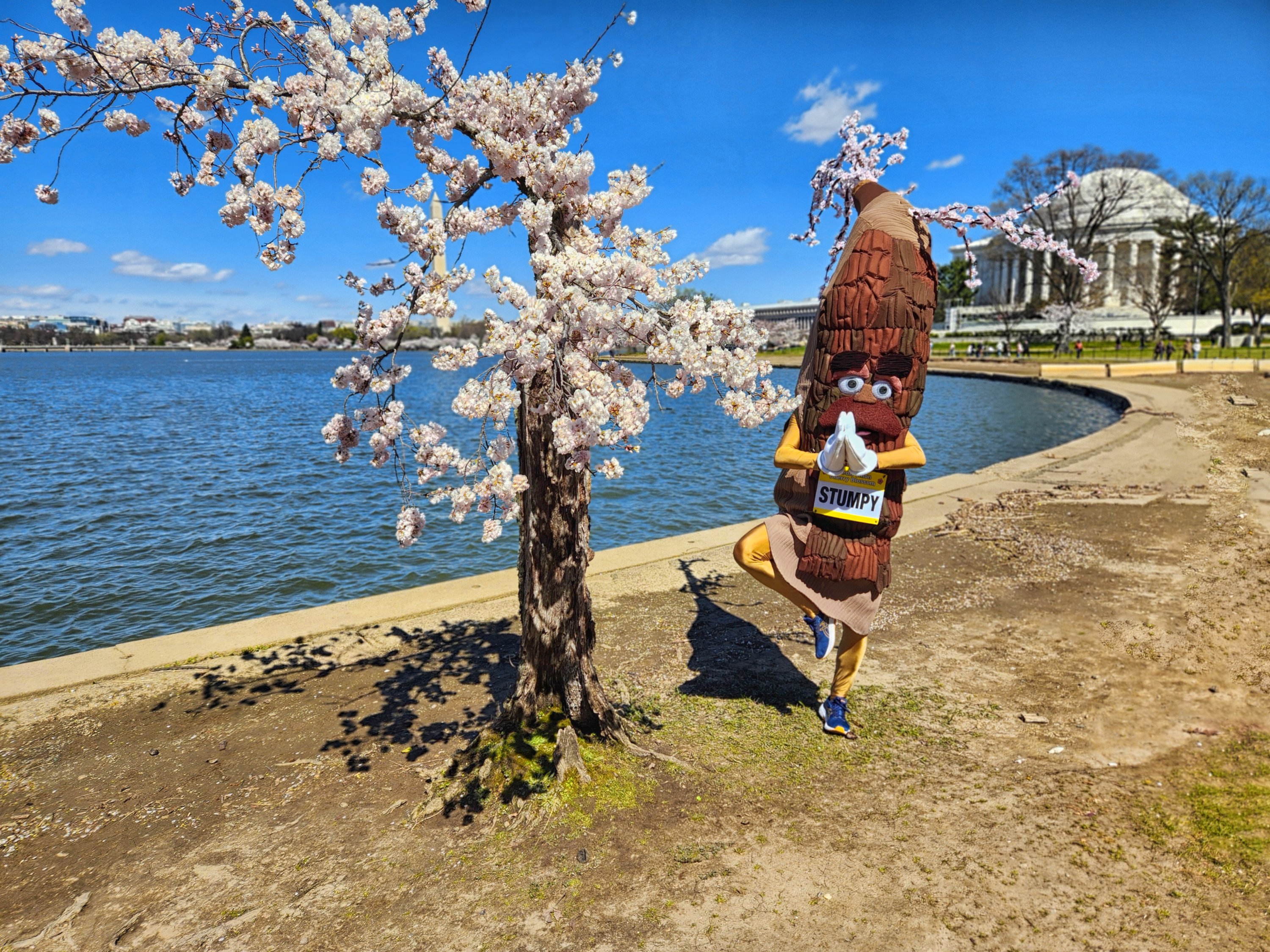
So how did we get here? While the National Park Service estimates Stumpy to be about 25 years old—a rough estimation, given the hollowed trunk’s lack of rings—he didn’t quite enter the public’s imagination until 2020, when a Reddit user posted a picture and compared Stumpy’s decrepit condition to their love life, says Kevin Ambrose, a photographer and freelance writer for the Post. (Ambrose is the man who made a Stumpy-themed calendar late last year and a new running-themed Stumpy calendar this spring. At the suggestion of NPS, he also envisions creating a memorial calendar for Stumpy. “The Stumpy calendars have outsold any of my other calendars,” Ambrose says).
After that Reddit post, people began to notice Stumpy more, says NPS spokesman Mike Litterst, who notes that Stumpy’s survival in a challenging environment likely resonated with people during the pandemic. Interest only grew from there. “It was 2022, during peak bloom, when we started to notice people coming out and looking for him specifically,” said Litterst, who calls Stumpy a “popular folk-hero tree” and says the NPS’s forester receives more questions about Stumpy than any of Mall’s 24,000 other trees. “Then, last year, people were literally lining up to get pictures taken.”
Having photographed the tree long before it got its name, Ambrose was quick to notice the new lines and wrote an article for the Post last spring titled, “Stumpy steals the hearts of thousands at the Tidal Basin.” This year, the fervor has risen “to a completely new level,” he says. And that’s largely because of some tragic news: Stumpy will be among the roughly 150 trees removed from the Tidal Basin and West Potomac Park as part of a three-year project to repair the site’s deteriorating seawalls.
“We have known for some time that, unfortunately, Stumpy would have to come down,” says Litterst. “We’ve been fretting for several years that if mother nature didn’t take its course, we would have to make this announcement … the seawalls simply weren’t built well in the late 19th and early 20th centuries and have sunk as much as five feet in some places. The other issue at play is the rising levels of water at the Tidal Basin that’s probably attributable to climate change.”
As a result, Stumpy is flooded with brackish waters almost twice-daily at high tide. Litterst adds that he’s also the “victim of sun scalding, compacted soil, and fungi and is already in what botanists refer to as its ‘mortality spiral.'”
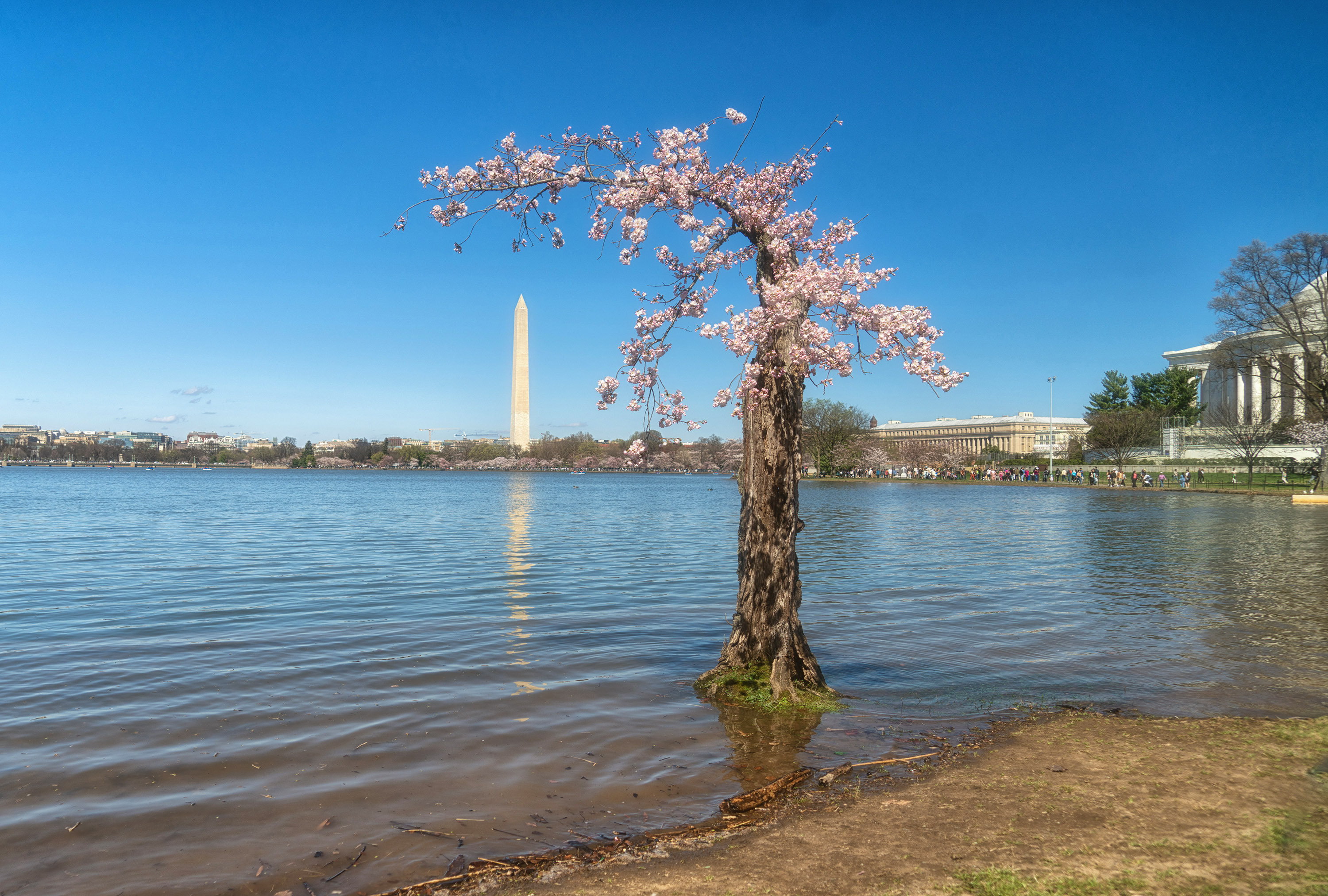
“There’s almost no way that tree should still be alive—the trunk is entirely hollowed out and he’s really nothing more than a little bit of bark and three branches,” says Litterst. “Yet, every year, during peak bloom, despite everything else, he puts out these beautiful blossoms and I think a lot of people relate to that. It’s a story of perseverance through difficult times.”
We can all sympathize with that—just trying our best, even when it feels like we’re drowning. It’s why Stumpy is, as one person called him on Instagram, “Our patron saint of perseverance.” It’s also why people were relieved to hear a sliver of good news: To preserve Stumpy’s legacy and memory, NPS will work with the National Arboretum to take cuttings from Stumpy (before he is subsequently mulched with the rest of the removed trees) which will then be propagated into genetically identical saplings that will be planted around the Tidal Basin once the seawall is restored.
Even with the prospect of future Stumpies around the Mall, Ambrose says, “the fact that, despite the tree’s best efforts to survive, the park service is going to cut it down and turn it into mulch, I think, is really hitting people the most.” For some, the idea of propagated clippings just wasn’t enough.
“Local DC has spoken: Stumpy must be saved!” wrote the Council of DC on X. “Uprooted and transplanted—intact—elsewhere in the District. Not chopped down, not just sampled for propagation.”
But the chances of a successful transplant are close to null, Litterst says.
“Due to its loss of structural integrity and its extremely weakened condition, ‘Stumpy’ simply would not survive an attempt to move it,” he told Washingtonian via email. “Nature has, sadly, already decided its fate … From a forestry perspective, that’s the circle of life – trees grow, when they die, they break down into soil, supporting the growth of new trees.” Or, in this case, new Stumpies.

